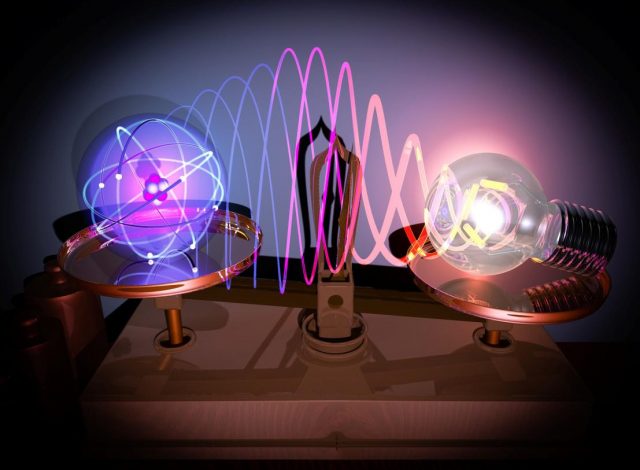When Optics goes Atomic
An international team with the participation of the Center for Materials Physics in San Sebastián (CSIC-UPV/EHU) and Donostia International Physics Center (DIPC) have created the smallest lens in the world, capable to concentrate light down to dimensions of an atom.
Researchers have used gold nanoparticles as focusing lenses that allow to flex individual chemical bonds in molecules.
For centuries, scientists believed that light couldn’t be focused down smaller than its wavelength, just under a millionth of a metre. Now, researchers from the Center of Materials Physics in San Sebastián (CSIC-UPV/EHU) and Donostia International Physics Center (DIPC), in collaboration with the University of Cambridge, have created the world’s smallest magnifying-glass which focuses light a billion times more tightly, down to the scale of single atoms.
“Our theoretical models suggested that this could be possible, as it has been just confirmed”, says Prof. Javier Aizpurua, researcher from the Center for Materials Physics in San Sebastian and DIPC, who led the theoretical effort of this work, which development predicted the confinement and interaction of light on such tiny length scales.
The experimental team in Cambridge, led by Prof. Jeremy Baumberg, used highly conductive gold nanoparticles to make the world’s tiniest optical cavity. The cavity – called a ‘pico-cavity’ by the researchers – consists of a bump in a gold nanostructure the size of a single atom, and confines light to less than a billionth of a metre. At the setup, close to the cavity there are a series of molecules, so the experiment opens up new ways to study the interaction of light and matter. The results are reported in the journal Science 1.

In the same way as a hand plucks the strings of a guitar, the energy of light can activate the vibrations of a particular chemical bond in a molecule. This phenomenon is called optomechanical interaction, and in this work, the researchers have achieved that light localized at the picocavity can “pluck” the vibrations of a nearby molecule. This can be understood as the tiniest guitar in the world, a “molecular guitar” activated by light.
“It is a molecular optomechanical interaction that can be used to switch optical signal at the atomic scale, that is to play with light particular “notes” in our molecular “guitar”: certain light plays some notes, and others are not capable to activate them”, explains Aizpurua.
Building nanostructures with single atom control is extremely challenging, and it requires cooling the samples to -260°C in order to freeze the scurrying gold atoms. When the researchers shone laser light on the gold nanoparticle sample, a few isolated gold atoms move to build the pico-cavity. At the very same time, the light trapped within the pico-cavity activates the vibration of a nearby molecule, a the whole process can be monitored in real time.
Single gold atoms behave just like tiny metallic basketballs that trap light thanks to the behaviour of their electrons roaming around. They used this to blend light together with mechanical springs based on single vibrating bonds, which allows molecular motion to be used for tiny switches. This has the potential to open a whole new field of light-catalysed chemical reactions, allowing complex molecules to be built from smaller components, as well as to make new opto-mechanical devices.
References
- Felix Benz, Mikolaj K. Schmidt, Alexander Dreismann, Rohit Chikkaraddy, Yao Zhang, Angela Demetriadou, Cloudy Carnegie, Hamid Ohadi, Bart de Nijs, Ruben Esteban, Javier Aizpurua, Jeremy J. Baumberg, (2016) Single-molecule optomechanics in ‘pico-cavities’ Science. doi: 10.1126/science.aah5243 ↩